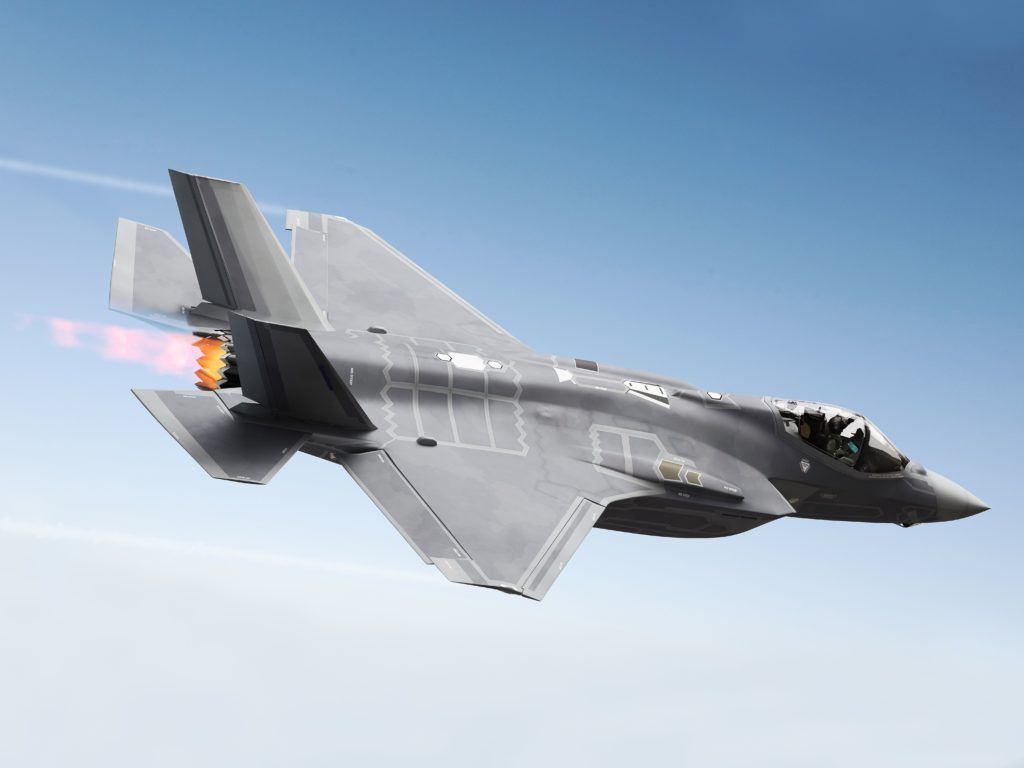Lockheed Martin’s facility at Fort Worth, Texas is to trial the use of drones and robots on an
F-35 assembly line to autonomously conduct metrology and NDT.
The system being developed for the program could replace manual inspections currently performed by workers on gantries. The technology aims to improve accuracy, safety and efficiency with a combination of aerial drones and ground robots conducting surface metrology and NDT.
Chris Colaw, Lockheed fellow, quality and mission success said, “There needs to be a bold first adopter of aerial digital inspection in the industry, and Lockheed Martin hopes to fulfill that role with this use case.
“This is important in the quality space as it helps us peel away the reliance on so much human involvement.”
Measuring Lightning
Many devices allow for digital measurement of parts and assemblies on a small level. However, scaling up inspections to inspect completed airframes, while retaining quality goals and reducing costs is
a significant challenge.
“Roughly 75% of my costs come from inspection, and 66% of that requires humans to perform, which involves some degree of subjectivity,” said Colaw. “But in our digital future we need to embrace things in a different way.”
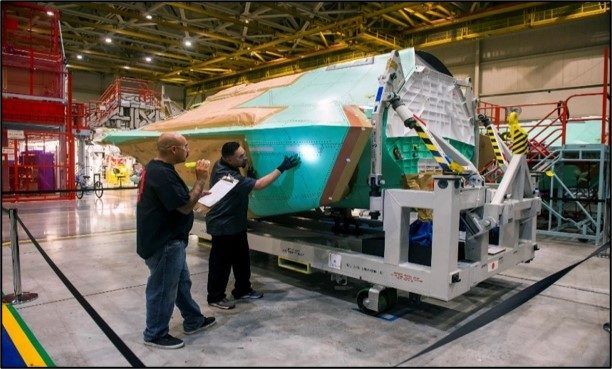
Lockheed Martin sought to find an automated metrology solution to confirm and document measurements to the tightest tolerances in a faster, more accurate, and repeatable process as part of the project. The company started working with Texas-based company CAD / CAM Services last Spring, with funding from a Small Business Technology Transfer Research (STTR) award.
The company assembled suppliers to deliver a drone-mounted scanner that can accurately measure large assemblies and send data to a system that creates CAD files for inspection or maintenance purposes.
“We are taking COTS components, slightly modifying them and tying it all together to create a new system,” said Scott Shuppert, CEO of CAD / CAM Services. “Our team decided we needed to have both a drone and a robot to inspect on the assembly line. The drones will fly above and around the craft, while the wheel-mounted robot will work underneath the plane.”
Environmental Integration
CAD / CAM’s drone and camera inspection software actively searches for issues such as dents, cracks, deformations, corrosion and alignment issues. It then reconciles the measured results to the design model.
CAD / CAM is working with Maryland-based company Airgility to develop the drones and the guidance and control (G&C) system.
“Since GPS signals can’t penetrate a heavily built aircraft hangar, the drone has to rely on the internal G&C system,” said Pramod Raheja, CEO and co-founder of Airgility. “This system regulates the angular orientation of the drone via an independent thrust vectoring system so it can follow a 3D reference trajectory based on the physical dimensions of the aircraft.”
According to Raheja, situational awareness is achieved by an algorithm that incorporates data from numerous redundant sensors. This allows the craft to fly in narrow spaces, like over and under a gantry or aircraft wing. Also included in the intelligence is a self-contained on-onboard AI failsafe mechanism, so if the software crashes for any reason the drone will simply back away, avoid any obstacles, and land itself.
Collision avoidance is important, because in addition to the aircraft itself the Lockheed Martin factory floor presents numerous physical obstacles including scaffolding, pilot ladders, auxiliary power units, tails, canopies, and people.
“Before we allow a drone to fly next to an US$80 million jet, we wanted to test it within a lab environment,” said Colaw.
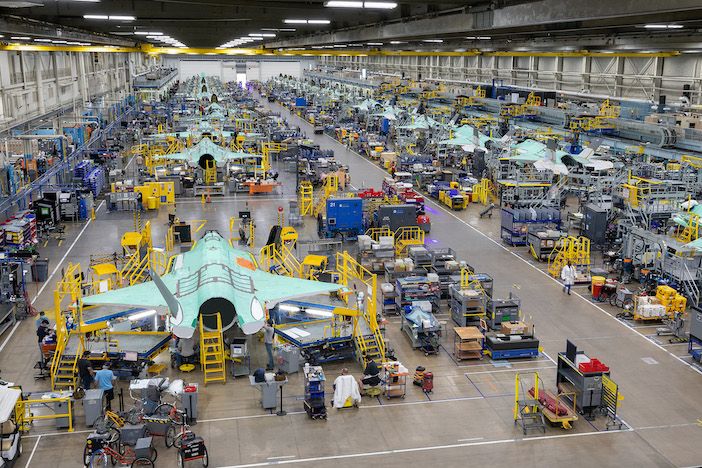
Testing of the system is being conducted at the University of Texas at Arlington. Animesh Chakravarthy, professor of mechanical and aerospace engineering and flight control there said, “The goal is to have the drone performing multiple precise orbits around the aircraft, at just the right speed, while at the same time ensuring that the scanner is properly oriented towards the aircraft,” said Chakravarthy.
“The trick is not getting so close as to cause a collision, but not so far away as to distort the readings.”
Chakravarthy’s advanced students are developing a robot that carries the scanner under the aircraft along the plant floor. This ground robot will be equipped with its own G&C system – conceptually like that the drone’s – that will autonomously track the reference trajectory while ensuring collision avoidance.
“Sometimes drone technology gets a lot of attention because it is neat and intriguing, but there has to be a business value behind it,” said Colaw. “Using drones and this type of scanning technology really opens the door to better understand our product and to cost-effectively substantiate the quality of our products in a way that we cannot currently do because we are limited by human bandwidth.”
Expanding capabilities
The project also includes options to develop ways of identifying any delamination within the composite skin of the F-35. Since separation of the layers and voids cannot always be seen or measured from the surface, a non-destructive testing method has to be developed to perform this function.
Highly sensitive IR cameras will be used to inspect beneath the composite surface of the craft to effectively visualize and identify any anomalies.
Desmond Lamont, global business development manager for Teledyne FLIR said, “The IR flash lamps act as an excitation source to transfer heat through the material. Since voids and gaps don’t transfer heat as efficiently as a solid does, the heat will build and the camera identifies these hot spots and points out the adjacent fault areas.”
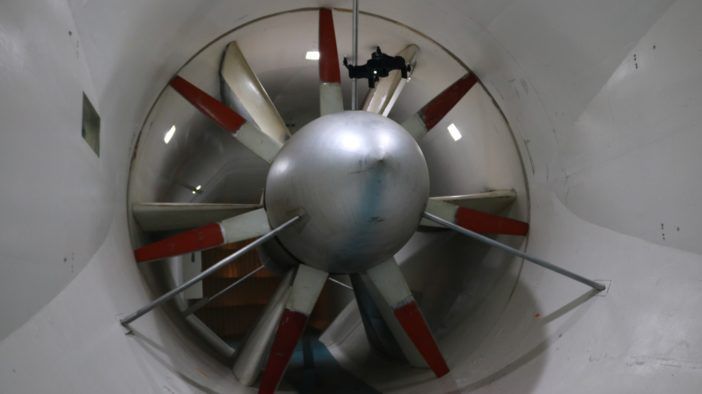
Cutting the cord
While there were a number of challenges the team encountered, the issue of removing the wiring tether from the scanner was considered one of the most significant. A wireless approach is much safer and more capable of dodging personnel and physical infrastructure on the factory floor.
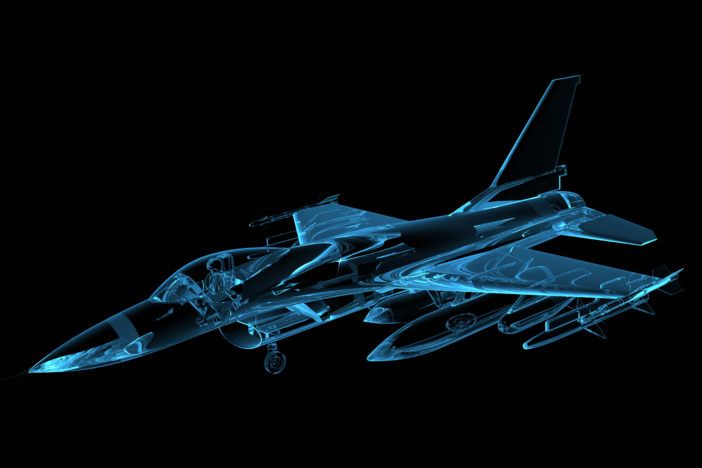
The Airgility team plans to solve this problem by utilizing AI drones that only transmit crucial data, thus greatly reducing bandwidth. “Since the intelligent drone knows what anomalies to look for, it only sends that info and ignores the expected results,” said Raheja. “Therefore, you don’t need to transmit a lot of data continuously.”
The ultimate result will be a reliable, highly accurate (± 0.025mm) inspection platform for large body aircraft that removes human error and safety risk from the manufacturing environment.
“With the F-35 there certainly is a use case to employ this technology where it has a successful chance of entry,” said Colaw. “The idea is to scale it across the other Lockheed Martin business units, and then become a major proponent for using this technology in other applicable industries.”


